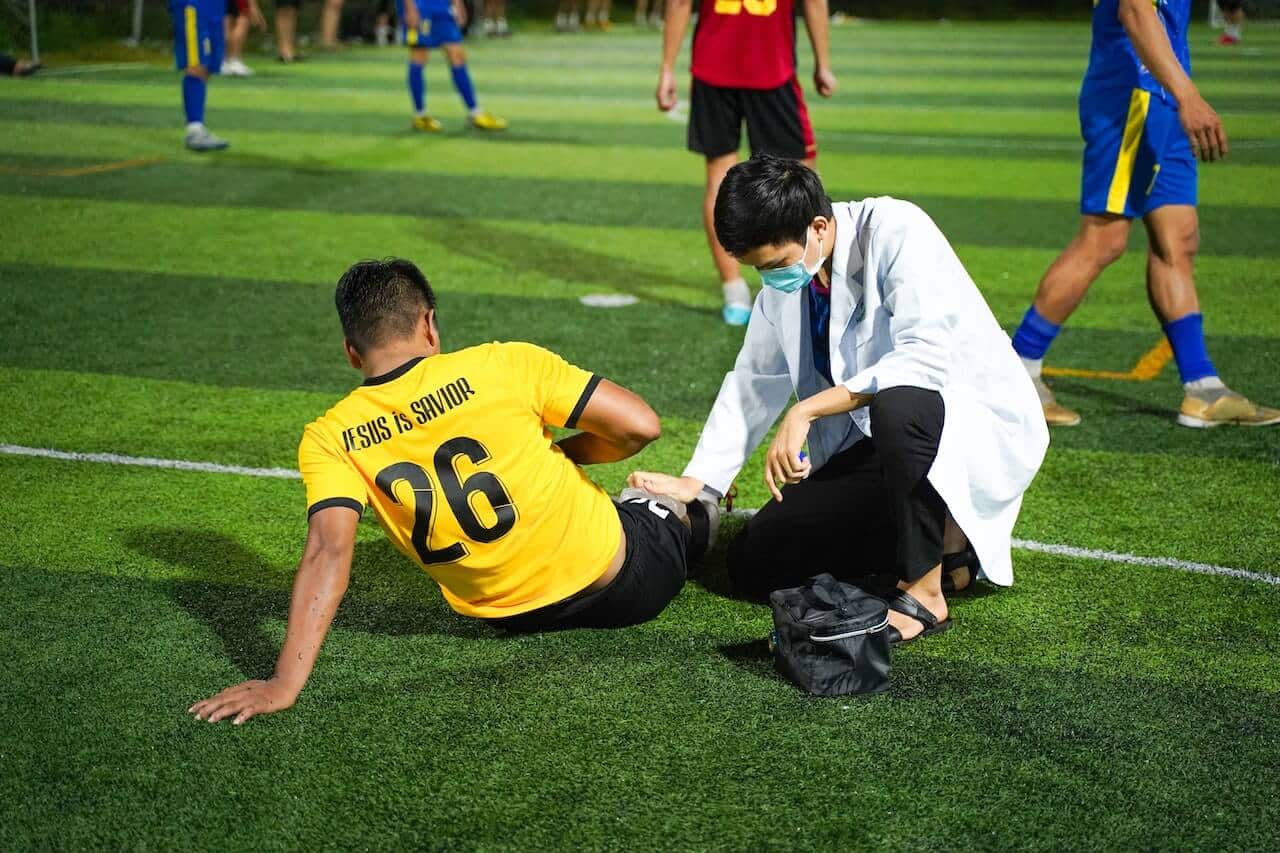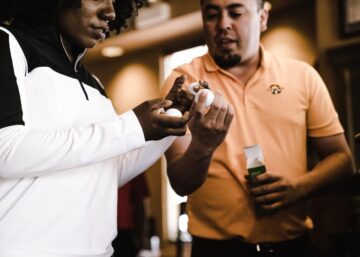Soccer is one of the most popular sports worldwide, with an estimated 4 billion fans. However, it is also a sport with a high risk of injury. Injuries in soccer can range from minor bruises to severe fractures, and can occur at any level of play, from amateur to professional.
According to a study by the National Institutes of Health, soccer players have a higher risk of injury than athletes in many other sports, including basketball, baseball, and football. Common injuries in soccer include ankle sprains, knee injuries, and head injuries. These injuries can result from collisions with other players, falls, or overuse.
Despite the risks, soccer remains a beloved sport for millions of people around the world. With proper training, equipment, and medical care, players can reduce their risk of injury and stay safe on the field. However, it is important for players, coaches, and parents to be aware of the potential risks and take steps to prevent and treat injuries when they occur.
Common Injuries in Soccer
Soccer is a physically demanding sport that requires players to run, jump, and change direction quickly. As a result, injuries are common in soccer, and players of all skill levels are at risk. Here are some of the most common injuries in soccer:
- Ankle sprains: Ankle sprains occur when the ligaments in the ankle are stretched or torn. They are common in soccer because of the quick changes in direction and the need to pivot on the foot.
- Hamstring strains: Hamstring strains occur when the muscles at the back of the thigh are stretched or torn. They are common in soccer because of the sprinting and kicking motions.
- Knee injuries: Knee injuries can range from minor sprains to serious ligament tears. They are common in soccer because of the twisting and turning motions.
- Concussions: Concussions can occur when a player’s head collides with another player, the ball, or the ground. They are a serious injury and can have long-term effects on a player’s health.
- Groin strains: Groin strains occur when the muscles in the groin area are stretched or torn. They are common in soccer because of the kicking and twisting motions.
It’s important for players to take steps to prevent injuries, such as warming up before playing, wearing proper equipment, and practicing good technique. If a player does get injured, it’s important to seek medical attention and follow a proper treatment plan to ensure a full recovery.
Prevention Strategies
Soccer is a high-intensity sport that requires a lot of physical exertion, and it is not uncommon for players to sustain injuries. However, there are several strategies that players can use to prevent injuries and stay on the field.
One of the most important prevention strategies is proper warm-up and stretching before the game. This can help to increase flexibility and reduce the risk of muscle strains and tears. Players should also make sure to cool down and stretch after the game to prevent stiffness and soreness.
Another important strategy is to wear the appropriate protective gear. Shin guards are essential to protect the lower legs from kicks and collisions, while cleats can provide better traction and reduce the risk of slipping on the field. Goalkeepers should also wear gloves to protect their hands from hard shots and collisions.
Players should also be mindful of their technique and form when playing. Proper technique can help to reduce the risk of injuries such as sprains and strains. Coaches and trainers can provide guidance on proper technique and form, and players should make sure to practice and reinforce good habits.
Finally, players should listen to their bodies and take breaks when necessary. Overuse injuries such as stress fractures and tendonitis can occur when players push themselves too hard without proper rest and recovery. It is important to take breaks and allow the body to rest and recover in between games and practices.
Treatment Options
When it comes to treating injuries in soccer, there are several options available depending on the severity of the injury. Here are some common treatment options:
- RICE: Rest, Ice, Compression, and Elevation. This is a common treatment for minor injuries such as sprains and strains. Rest the injured area, apply ice to reduce swelling, compression to reduce inflammation, and elevate the injured area to reduce swelling.
- Physical Therapy: For more serious injuries or after surgery, physical therapy may be necessary to help the player regain strength and mobility in the injured area.
- Medication: Pain relievers such as ibuprofen or acetaminophen may be recommended to help manage pain and reduce inflammation.
- Surgery: In some cases, surgery may be necessary to repair a serious injury such as a torn ligament or tendon.
It’s important for players to seek medical attention as soon as possible after an injury to determine the best course of treatment. Delaying treatment can lead to more serious complications and a longer recovery time.
After treatment, players may need to take time off from playing soccer to allow their injuries to fully heal. It’s important for players to follow their doctor’s instructions and not rush back into playing too soon, as this can lead to re-injury and further complications.
Recovery and Rehabilitation
When a soccer player gets injured, the recovery and rehabilitation process is crucial for their return to the field. The goal of recovery and rehabilitation is to restore the player’s physical and mental abilities to pre-injury levels, and to prevent future injuries.
The recovery process begins with rest and proper medical treatment, which may include surgery, medication, or physical therapy. The length of the recovery period depends on the severity of the injury, the player’s age, and their overall health.
Once the player is cleared to begin rehabilitation, they will work with a physical therapist to regain strength, flexibility, and range of motion. This may involve exercises such as stretching, strength training, and balance training. The therapist will also work to address any imbalances or weaknesses that may have contributed to the injury.
In addition to physical rehabilitation, mental rehabilitation is also important. Injuries can be mentally challenging for players, and it’s important for them to stay positive and focused on their recovery. This may involve working with a sports psychologist or counselor to develop coping strategies and mental toughness.
As the player progresses through the rehabilitation process, they may begin to integrate back into team training and eventually return to play. It’s important for players to listen to their bodies and communicate with their medical team throughout the recovery process to ensure a safe and successful return to the field.







